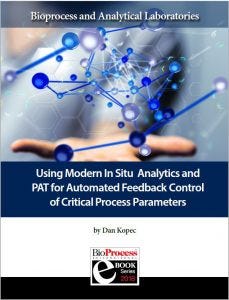Voices of Biotech
Podcast: MilliporeSigma says education vital to creating unbreakable chain for sustainability
MilliporeSigma discusses the importance of people, education, and the benefits of embracing discomfort to bolster sustainability efforts.
November 30, 2018
 Simply put, the best way to control a critical process parameter (CPP) is to measure that specific parameter, integrate the live signal into your control system, and apply a smart feedback algorithm for an automated control loop. The challenge in doing this for bioprocesses has been due, in part, to the complex, highly dynamic, and variable nature of the process along with the lack of robust, scalable, and multiformat (single-use or multiuse) technologies that can monitor in real time such critical parameters (e.g., nutrients/metabolites and live cell concentration).
Simply put, the best way to control a critical process parameter (CPP) is to measure that specific parameter, integrate the live signal into your control system, and apply a smart feedback algorithm for an automated control loop. The challenge in doing this for bioprocesses has been due, in part, to the complex, highly dynamic, and variable nature of the process along with the lack of robust, scalable, and multiformat (single-use or multiuse) technologies that can monitor in real time such critical parameters (e.g., nutrients/metabolites and live cell concentration).
Other industries such as food and chemical have been conducting advanced automation of CPPs for decades. The apparent ease in which they do that may be attributable to the fact that those processes are binary or typically have a minimal number of changing components that are well defined. Ultimately, their success lies in the fact that robust and parameter-specific technologies have been widely available and well developed for this purpose.
A number of technologies and adaptations are now available for bioprocessing that are designed to help enable automation. Measuring CPPs with highly specific and scalable technologies that are adaptable to all bioreactor formats creates a strong foundation for advanced automation in bioprocessing. That is a critical point now because new bioprocess market dynamics and modalities are driving automation forward.
Just fill out this form to download the eBook now.
You May Also Like